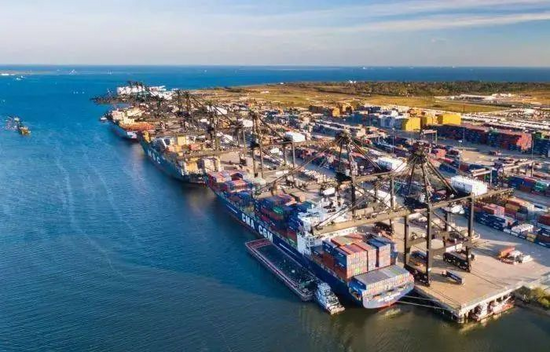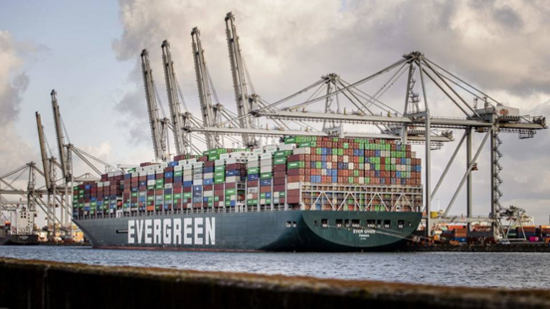According to data from the Port of Los Angeles, the current average waiting time for ships to berth is 6.2 days, compared with 5.7 days at the end of June. However, this figure is still lower than the 8-day average waiting time set in April.
San Pedro Bay is located in California, USA, and has the busiest port in the United States. Among them, the Port of Los Angeles is an important gateway for American international trade and the busiest seaport in the Western Hemisphere. According to the official website of the Port of Los Angeles, the port's throughput will be 9.2 million 20-foot standard units (TEUs) in 2020, ranking first among major ports in the United States.
Not only the United States, real-time data from logistics company Kuehne+Nagel shows that there are currently 353 cargo ships stuck in ports around the world, more than twice the number at the beginning of this year.

In addition to port container congestion, transportation costs are also soaring.
The British Financial Times pointed out that data from the data provider Freightos showed that shipping a 40-foot container from China to the West Coast of the United States has soared to US$15,800, which is 10 times the level before the epidemic and has increased by half from the previous month. Lars Mikael Jensen, director of Maersk's global ocean network, the world's largest container shipping group, said that since the delta mutant strain was prevalent, the situation has not shown any signs of improvement, and the maritime transportation network is still very tense.
In addition, previous data has shown that global shipping prices have hit a new high.
On the one hand, according to CCTV Finance, the global container freight index on August 10 showed that the shipping price from China, Southeast Asia to the east coast of North America exceeded US$20,000 per TEU for the first time. On the other hand, on August 12, the Baltic Dry Bulk Index, a benchmark for global bulk freight prices, rose 93 points or about 3% to 3,503 points, the highest level since mid-2010.
The surge in shipping prices is expected to exacerbate a series of problems in the supply chain, including semiconductor shortages and rising raw material prices.
These influences in Europe have been reflected in the weak summer industrial production. According to the Financial Times, George Buckley, chief UK and euro zone economist at Nomura Securities, said that supply chain terminals may put pressure on euro zone production for a period of time. Supply disruptions will prompt larger manufacturers and retailers to consider strengthening the supply chain by increasing inventories and double purchasing.
According to the Drewry report, despite the increase in investment in container ports, facts have proved that in the next few years, the problem of port congestion will become increasingly serious for the container shipping industry.

The major container ports on the west coast of the United States, led by the Port of Long Beach and the Port of Los Angeles, are well-known and criticized. In response to the problem of insufficient port capacity, some well-known shipping companies such as Maersk, ONE and Hapag-Lloyd have made severe criticisms. But to eliminate delays, more measures are needed to speed up port expansion.
Drewry's report pointed out that, in any case, the underinvestment and scarcity of ports will only worsen in the next few years, which will increasingly become the core problem of the centralized transportation industry. According to Drewry's estimates, by 2025, global port throughput will grow at an annual rate of 2.5%, which means that in the next four years, this number will reach approximately 1.3 billion TEU. At the same time, the shipping company's demand will increase at an annual rate of about 5%, which will increase the shipping company's port utilization rate from the current 67% to 75%.
The congestion problem is bound to become prominent
From an economic point of view, this sign is positive. However, considering the recent port congestion problem, the above 75% utilization rate may be too close to the high level.
Drewry said that if the port's capacity is not improved, this issue will cause concern. This is because the terminal utilization rate of each port will not be balanced, and the historical experience of the new crown epidemic shows that if one port is blocked, other ports will soon be implicated. Most of the port expansion currently under way is expected to be the expansion of existing port facilities. However, the construction of the new port is still at a very low level.
On the other hand, according to the 2020 survey, in the ranking of global terminal operators, Asian ports, especially Chinese ports, are among the top three in the world. PSA International ranked first with 59.5 million TEU. China Merchants Port has jumped to second place in 2020, with throughput increasing by 13.4% to 47.1 million TEU. COSCO SHIPPING Port ranked third with 46.2 million TEU. Maersk’s APM Terminals ranked fourth with 45.5 million TEU. Among them, the rise in the ranking of China Merchants ports is due to the purchase and sale agreement reached with the French CMA CGM Group and the acquisition of a number of previously negotiated ports.
















 RCCN WeChat QrCode
RCCN WeChat QrCode Mobile WebSite
Mobile WebSite